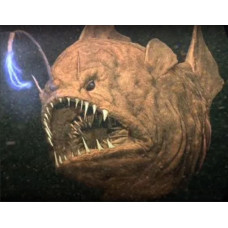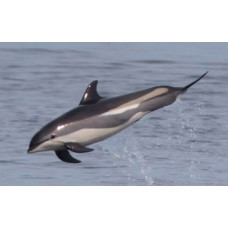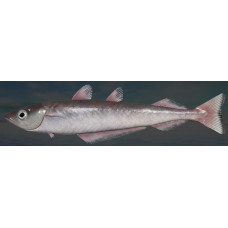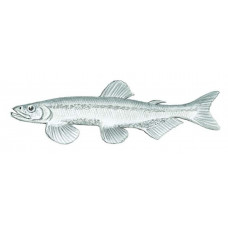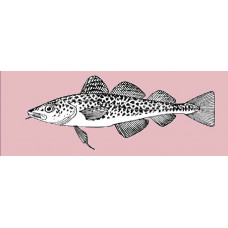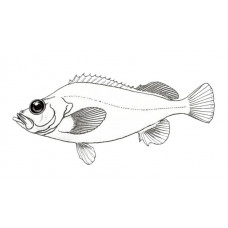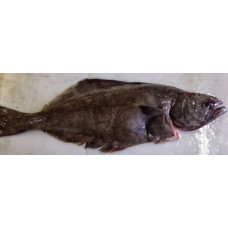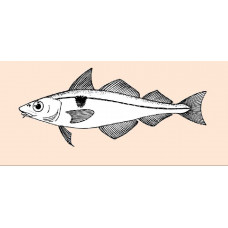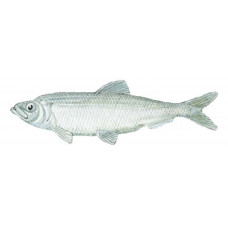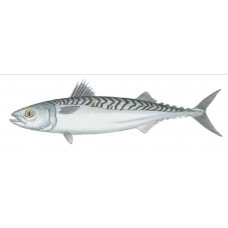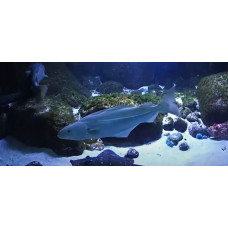Fauna of the Iceland Sea
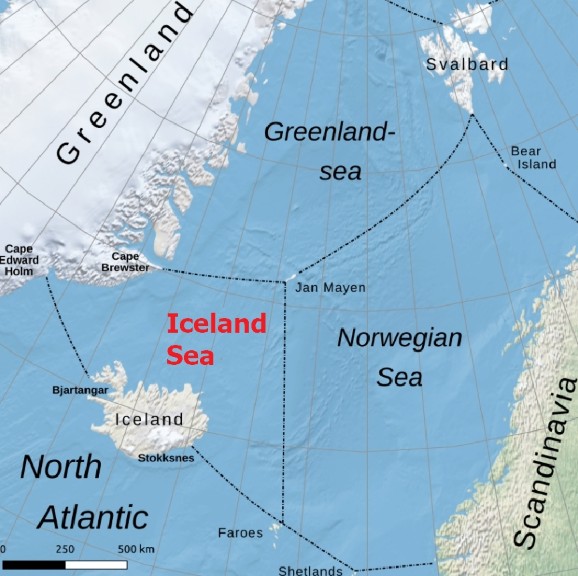 It is a sea of the Arctic Ocean extending north and east of Iceland. It is one of the Scandinavian seas. It is bounded by: Iceland to the south, Greenland to the west, Jan Mayen to the north, and the Faroe Islands to the east. The Iceland Sea communicates with the Norwegian Sea to the east, the Greenland Sea to the north, and the Atlantic Ocean to the south. The Kolbeinsey Oceanic Ridge divides the Iceland Sea into eastern and western parts. The predominant depths range from 500 to 2,000 meters. The greatest depth is 2,795 meters. The largest currents in this area of the Arctic Ocean are the East Iceland Current and the East Greenland Current. The sea is surrounded by two major water masses: the warm, salty Atlantic waters and the cold Arctic waters. Each water mass originates from a different source and has unique characteristics. When these two water masses meet, the ratio of warm to cold water changes.
It is a sea of the Arctic Ocean extending north and east of Iceland. It is one of the Scandinavian seas. It is bounded by: Iceland to the south, Greenland to the west, Jan Mayen to the north, and the Faroe Islands to the east. The Iceland Sea communicates with the Norwegian Sea to the east, the Greenland Sea to the north, and the Atlantic Ocean to the south. The Kolbeinsey Oceanic Ridge divides the Iceland Sea into eastern and western parts. The predominant depths range from 500 to 2,000 meters. The greatest depth is 2,795 meters. The largest currents in this area of the Arctic Ocean are the East Iceland Current and the East Greenland Current. The sea is surrounded by two major water masses: the warm, salty Atlantic waters and the cold Arctic waters. Each water mass originates from a different source and has unique characteristics. When these two water masses meet, the ratio of warm to cold water changes.
The inhabitants of the Iceland Sea
The local flora and fauna are currently experiencing shifts due to the effects of climate change. Of particular concern is ocean acidification, which threatens marine life and reduces habitats for bivalves and other organisms. Warming seas have also impacted the marine ecosystem, altering the distribution and abundance of various finfish species, particularly capelin and mackerel. Additionally, several species of groundfish, such as haddock and monkfish, which traditionally lived along Iceland's southern coast, have expanded their range and now live further north. Changes in environmental conditions have led to a decline in seabird and seal numbers, as well as changes in some whale species' habitats.
Phytoplankton and zooplankton in the Iceland Sea
The Iceland Sea has a diverse ecosystem. Two groups of phytoplankton—diatoms and dinoflagellates—inhabit these waters. Diatoms belonging to the genera Thalassiosira and Chaetoceros are abundant and grow in large numbers in the spring. After spring, when common dinoflagellates belonging to the genera Ceratium and Protoperidinium bloom, the diatoms remain abundant. Throughout the fall, diatoms usually bloom again, though dinoflagellates remain abundant.
These waters are also home to zooplankton, particularly copepods such as Calanus finmarchicus, which comprise 60% to 80% of the zooplankton population. Other commonly found species are Pseudocalanus, Acartia longiremis, and Oithona.
Invertebrates in the Iceland Sea
Five species of invertebrates inhabit the sea: the northern shrimp (Pandalus borealis), the Norway lobster (Nephrops norvegicus), the Iceland scallop (Chlamys islandica), the ocean quahog (Arctica islandica), and the common welk (Buccinum undatum). These invertebrates are an essential food source for larger organisms, including fish, marine mammals, and seabirds.
Fish in the Iceland Sea
The marine life in this sea is defined by cold-water fish species that have adapted to its harsh environment. These species have developed a variety of physical and behavioral adaptations to ensure their survival, including specialized body structures, anti-freeze proteins, and unique feeding strategies. The Iceland Sea is home to fish such as: cod (Gadus morhua), haddock (Melanogrammus aeglefinus), saithe (Pollachius virens), redfish (Sebastes marinus), herring (Clupea harengus), blue whiting (Micromesistius poutassou), capelin (Mallotus villosus), monkfish (Lophius piscatorius), Atlantic mackerel (Scomber scombrus), and Greenland halibut (Reinhardtius hippoglossoides).
Mammals of the Iceland Sea
This body of water is home to eighteen species of cetaceans, including whales, dolphins, and porpoises, as well as seven species of pinnipeds, such as seals and walruses. Examples include the minke whale (Balaenoptera acutorostrata), the humpback whale (Megaptera novaeangliae), the blue whale (Balaenoptera musculus), the Atlantic white-sided dolphin (Lagenorhynchus acutus), the northern bottlenose whale (Hyperoodon ampullatus), the harbor seal (Phoca vitulina), and the grey seal (Halichoerus grypus). These species have adapted remarkably well to the region's extreme environment, demonstrating the resilience of life on Earth.
Angler
Latin nameLophius piscatoriusOther namesEuropean angler, common monkfish.IdentificationThe body is n..
Atlantic white-sided dolphin
Latin nameLagenorhynchus acutusIdentificationThe Atlantic white-sided dolphin is characterized by it..
Blue whiting
Latin nameMicromesistius poutassouOther namesMerluci blu (Albanian), Kék puha tőkehal (Hungarian), B..
Capelin
Latin name Mallotus villosus Other names Danish/Dutch/German/ Norwegian: lodde; French: capelin a..
Cod, Atlantic
Latin name Gadus morhua Other names Cod, codfish, codling, scrod; French: morue de l’Atlantique; ..
Golden redfish
Latin nameSebastes norvegicusOther nameRed fish, Red perch, Ocean perch, Rosefish, Norway haddock, N..
Greenland halibut
Latin nameReinhardtius hippoglossoidesOther namesGreenland turbotIdentificationThe body is elongated..
Haddock
Latin name Melanogrammus aeglefinus Other names Haddie, scrod; French: eglefin; Italian: asinello..
Herring, Atlantic
Latin name Clupea harengus Other names Herring; Danish: Atlantisk sild, sild; Finnish: silakka, s..
Mackerel, Atlantic
Latin name Scomber scombrus Other names Mackerel, common mackerel, Boston mackerel; Arabic: scomb..
Pollachius virens
Pollachius virens is a marine fish of the cod family. Body length up to 1.2 m. Weight up to 10 kg, u..

